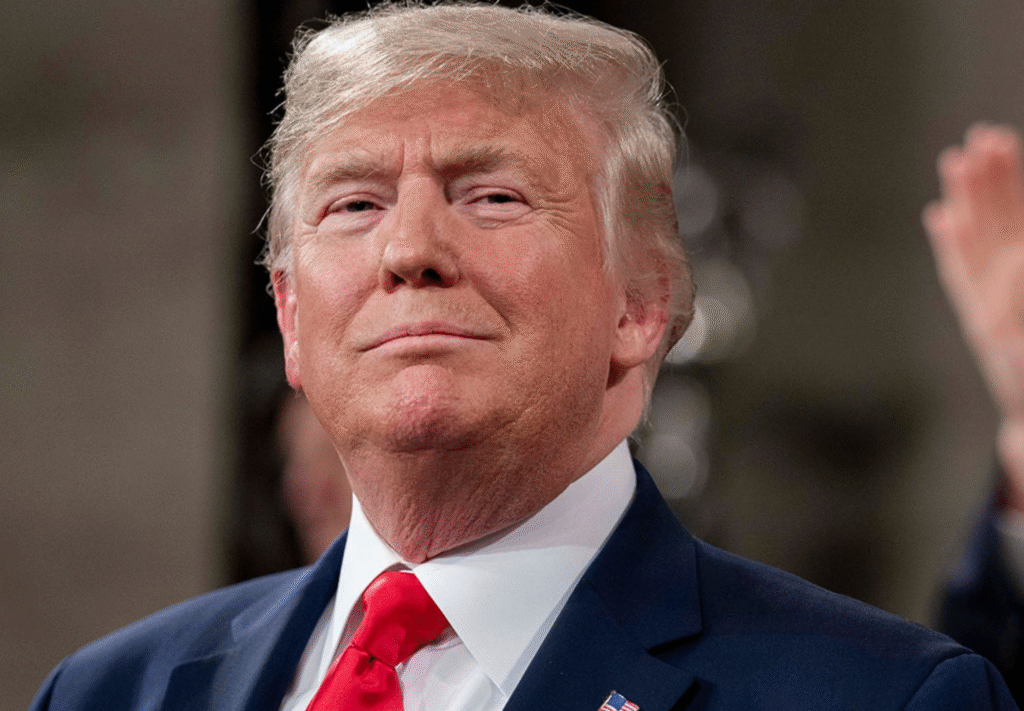World News
Steg.AI puts deep learning on the job in a clever evolution of watermarking on August 1, 2023 at 11:01 am

Watermarking an image to mark is one’s own is something that has value across countless domains, but these days it’s more difficult than just adding a logo in the corner. Steg.AI lets creators embed a nearly invisible watermark using deep learning, defying the usual “resize and resave” countermeasures.
Ownership of digital assets has had a complex few years, what with NFTs and AI generation shaking up what was a fairly low-intensity field before. If you really need to prove the provenance of a piece of media, there have been ways of encoding that data into images or audio, but these tend to be easily defeated by trivial changes like saving the PNG as a JPEG. More robust watermarks tend to be visible or audible, like a plainly visible pattern or code on the image.
An invisible watermark that can easily be applied, just as easily detected, and which is robust against transformation and re-encoding is something many a creator would take advantage of. IP theft, whether intentional or accidental, is rife online and the ability to say “look, I can prove I made this” — or that an AI made it — is increasingly vital.
Steg.AI has been working on a deep learning approach to this problem for years, as evidenced by this 2019 CVPR paper and the receipt of both Phase I and II SBIR government grants. Co-founders (and co-authors) Eric Wengrowski and Kristin Dana worked for years before that in academic research; Dana was Wengrowski’s PhD advisor.
While Wengrowski noted that though they have made numerous advances since 2019, the paper does show the general shape of their approach.
“Imagine a generative AI company creates an image and Steg watermarks it before delivering it to the end user,” he wrote in an email to TechCrunch. “The end user might post the AI-generated image on social media. Copies of the deployed image will still contain the Steg.AI watermark, even if the image is resized, compressed, screenshotted, or has its traditional metadata deleted. Steg.AI watermarks are so robust that they can be scanned from an electronic display or printout using an iPhone camera.”
Although they understandably did not want to provide the exact details of the process, it works more or less like this: instead of having a static watermark that must be awkwardly layered over a piece of media, the company has a matched pair of machine learning models that customize the watermark to the image. The encoding algorithm identifies the best places to modify the image in such a way that people won’t perceive it, but that the decoding algorithm can pick out easily — since it uses the same process, it knows where to look.
The company described it as a bit like an invisible and largely immutable QR code, but would not say how much data can actually be embedded in a piece of media. If it really is anything like a QR code, it can have a kilobyte or three, which doesn’t sound like a lot, but is enough for a URL, hash, and other plaintext data. Multiple-page documents or frames in a video could have unique codes, multiplying this amount. But this is just my speculation.
Steg.AI provided multiple images with watermarks for me to inspect, some of which you can see embedded here. I was also provided (and asked not to share) the matching pre-watermark images; while on close inspection some perturbations were visible, if I didn’t know to look for them I likely would have missed them, or written them off as ordinary JPEG artifacts.
Yes, this one is watermarked.
Here’s another, of Hokusai’s most famous work:
Image Credits: Hokusai / The Art Institute of Chicago
You can imagine how such a subtle mark might be useful for a stock photography provider, a creator posting their images on Instagram, a movie studio distributing pre-release copies of a feature, or a company looking to mark its confidential documents. And these are all use cases Steg.AI is looking at.
It wasn’t a home run from the start. Early on, after talking with potential customers, “we realized that a lot of our initial product ideas were bad,” recalled Wengrowski. But they found that robustness, a key differentiator of their approach, was definitely valuable, and since then have found traction among “companies where there is strong consumer appetite for leaked information,” such as consumer electronics brands.
“We’ve really been surprised by the breath of customers who see deep value in our products,” he wrote. Their approach is to provide enterprise-level SaaS integrations, for instance with a digital asset management platform — that way no one has to say watermark that before sending it out; all media is marked and tracked as part of the normal handling process.
Concept illustration of a Steg.AI app verifying an image.
An image could be traced back to its source, and changes made along the way could conceivably be detected as well. Or alternatively, the app or API could provide a confidence level that the image has not been manipulated — something many an editorial photography manager would appreciate.
This type of thing has the potential to become an industry standard — both because they want it and because it may in the future be required. AI companies just recently agreed to pursue research around watermarking AI content, and something like this would be a useful stopgap while a deeper method of detecting generated media is considered.
Steg.AI has gotten this far with NSF grants and angel investment totaling $1.2 million, but just announced a $5 million A round led by Paladin Capital Group, with participation from Washington Square Angels, the NYU Innovation Venture Fund, and angel investors, Alexander Lavin, Eli Adler, Brian Early and Chen-Ping Yu.
Watermarking an image to mark is one’s own is something that has value across countless domains, but these days it’s more difficult than just adding a logo in the corner. Steg.AI lets creators embed a nearly invisible watermark using deep learning, defying the usual “resize and resave” countermeasures. Ownership of digital assets has had a
News
US May Completely Cut Income Tax Due to Tariff Revenue

President Donald Trump says the United States might one day get rid of federal income tax because of money the government collects from tariffs on imported goods. Tariffs are extra taxes the U.S. puts on products that come from other countries.

What Trump Is Saying
Trump has said that tariff money could become so large that it might allow the government to cut income taxes “almost completely.” He has also talked about possibly phasing out income tax over the next few years if tariff money keeps going up.
How Taxes Work Now
Right now, the federal government gets much more money from income taxes than from tariffs. Income taxes bring in trillions of dollars each year, while tariffs bring in only a small part of that total. Because of this gap, experts say tariffs would need to grow by many times to replace income tax money.
Questions From Experts
Many economists and tax experts doubt that tariffs alone could pay for the whole federal budget. They warn that very high tariffs could make many imported goods more expensive for shoppers in the United States. This could hit lower- and middle‑income families hardest, because they spend a big share of their money on everyday items.
What Congress Must Do
The president can change some tariffs, but only Congress can change or end the federal income tax. That means any real plan to remove income tax would need new laws passed by both the House of Representatives and the Senate. So far, there is no detailed law or full budget plan on this idea.

What It Means Right Now
For now, Trump’s comments are a proposal, not a change in the law. People and businesses still have to pay federal income tax under the current rules. The debate over using tariffs instead of income taxes is likely to continue among lawmakers, experts, and voters.
News
Epstein Files to Be Declassified After Trump Order

Former President Donald Trump has signed an executive order directing federal agencies to declassify all government files related to Jeffrey Epstein, the disgraced financier whose death in 2019 continues to fuel controversy and speculation.
The order, signed Wednesday at Trump’s Mar-a-Lago estate, instructs the FBI, Department of Justice, and intelligence agencies to release documents detailing Epstein’s network, finances, and alleged connections to high-profile figures. Trump described the move as “a step toward transparency and public trust,” promising that no names would be shielded from scrutiny.
“This information belongs to the American people,” Trump said in a televised statement. “For too long, powerful interests have tried to bury the truth. That ends now.”
U.S. intelligence officials confirmed that preparations for the release are already underway. According to sources familiar with the process, the first batch of documents is expected to be made public within the next 30 days, with additional releases scheduled over several months.
Reactions poured in across the political spectrum. Supporters praised the decision as a bold act of accountability, while critics alleged it was politically motivated, timed to draw attention during a volatile election season. Civil rights advocates, meanwhile, emphasized caution, warning that some records could expose private victims or ongoing legal matters.
The Epstein case, which implicated figures in politics, business, and entertainment, remains one of the most talked-about scandals of the past decade. Epstein’s connections to influential individuals—including politicians, royals, and executives—have long sparked speculation about the extent of his operations and who may have been involved.

Former federal prosecutor Lauren Fields said the release could mark a turning point in public discourse surrounding government transparency. “Regardless of political stance, this declassification has the potential to reshape how Americans view power and accountability,” Fields noted.
Officials say redactions may still occur to protect sensitive intelligence or personal information, but the intent is a near-complete disclosure. For years, critics of the government’s handling of Epstein’s case have accused agencies of concealing evidence or shielding elites from exposure. Trump’s order promises to change that narrative.
As anticipation builds, journalists, legal analysts, and online commentators are preparing for what could be one of the most consequential information releases in recent history.
Politics
Netanyahu’s UN Speech Triggers Diplomatic Walkouts and Mass Protests

What Happened at the United Nations
On Friday, Israeli Prime Minister Benjamin Netanyahu addressed the United Nations General Assembly in New York City, defending Israel’s ongoing military operations in Gaza. As he spoke, more than 100 delegates from over 50 countries stood up and left the chamber—a rare and significant diplomatic walkout. Outside the UN, thousands of protesters gathered to voice opposition to Netanyahu’s policies and call for accountability, including some who labeled him a war criminal. The protest included activists from Palestinian and Jewish groups, along with international allies.

Why Did Delegates and Protesters Walk Out?
The walkouts and protests were a response to Israel’s continued offensive in Gaza, which has resulted in widespread destruction and a significant humanitarian crisis. Many countries and individuals have accused Israel of excessive use of force, and some international prosecutors have suggested Netanyahu should face investigation by the International Criminal Court for war crimes, including claims that starvation was used as a weapon against civilians. At the same time, a record number of nations—over 150—recently recognized the State of Palestine, leaving the United States as the only permanent UN Security Council member not to join them.
International Reaction and Significance
The diplomatic walkouts and street protests demonstrate increasing global concern over the situation in Gaza and growing support for Palestinian statehood. Several world leaders, including Colombia’s President Gustavo Petro, showed visible solidarity with protesters. Petro called for international intervention and, controversially, for US troops not to follow orders he viewed as supporting ongoing conflict. The US later revoked Petro’s visa over his role in the protests, which he argued was evidence of a declining respect for international law.

Why Is This News Important?
The Gaza conflict is one of the world’s most contentious and closely-watched issues. It has drawn strong feelings and differing opinions from governments, activists, and ordinary people worldwide. The United Nations, as an international organization focused on peace and human rights, is a key arena for these debates. The events surrounding Netanyahu’s speech show that many nations and voices are urging new action—from recognition of Palestinian rights to calls for sanctions against Israel—while discussion and disagreement over the best path forward continue.
This episode at the UN highlights how international diplomacy, public protests, and official policy are all intersecting in real time as the search for solutions to the Israeli-Palestinian conflict remains urgent and unresolved.

 Entertainment4 weeks ago
Entertainment4 weeks agoWicked Sequel Disappoints Fans: Audience Verdict on For Good

 Entertainment4 weeks ago
Entertainment4 weeks agoAriana & Cynthia Say They’re in a ‘Non‑Demi Curious, Semi‑Binary’ Relationship… WTF Does That Even Mean?

 News4 weeks ago
News4 weeks agoMexico Bans Dophin Shows Nationwide

 Entertainment3 weeks ago
Entertainment3 weeks agoColombia’s ‘Doll’ Arrest: Police Say a 23-Year-Old Orchestrated Hits, Including Her Ex’s Murder

 Entertainment4 weeks ago
Entertainment4 weeks agoHow The Grinch Became The Richest Christmas Movie Ever

 Entertainment4 weeks ago
Entertainment4 weeks agoMiley Cyrus Is Engaged to Maxx Morando

 News4 weeks ago
News4 weeks agoUS May Completely Cut Income Tax Due to Tariff Revenue

 Business3 weeks ago
Business3 weeks agoLuana Lopes Lara: How a 29‑Year‑Old Became the Youngest Self‑Made Woman Billionaire





























